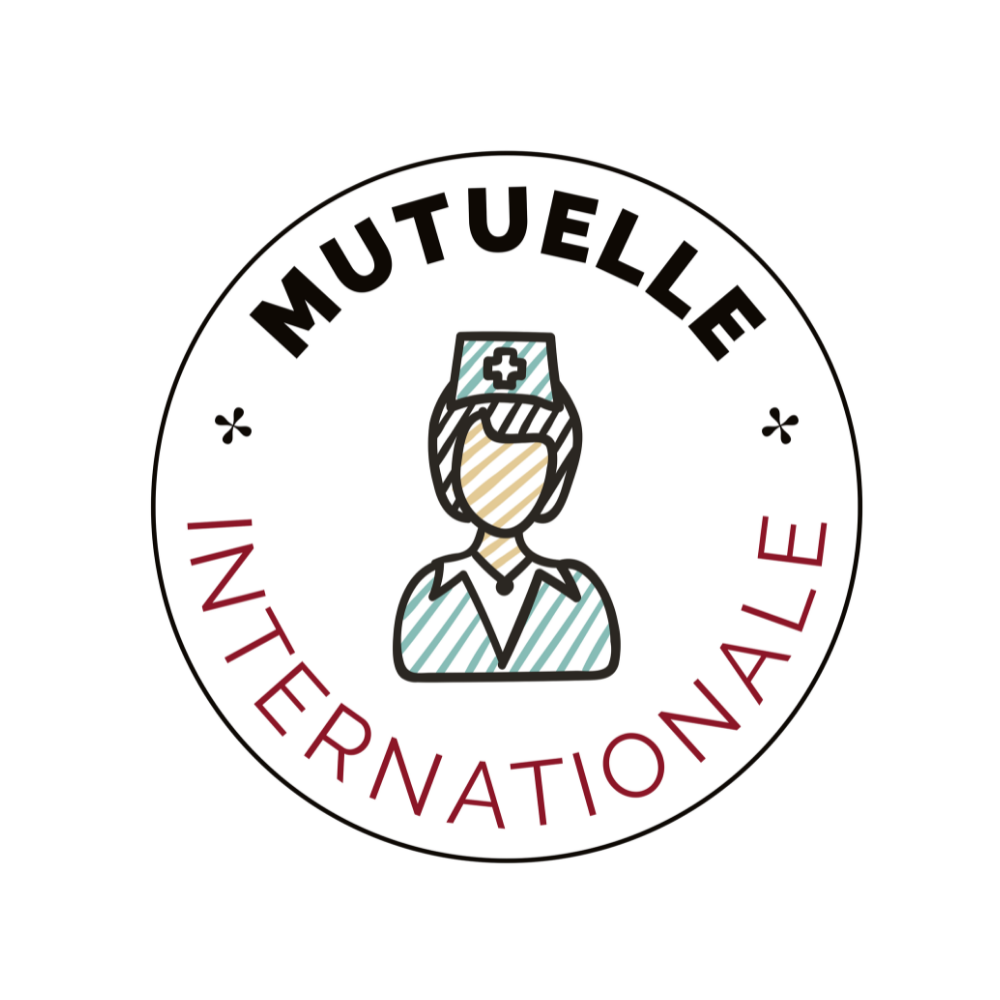|
IN BRIEF
|
has become a daily struggle for humanitarian organizations. Thechallenges are multiple: an increased demand for care, exacerbated by climate change, and a limitation of freedom of association in many regions of the world. Humanitarian actions are questioned through essential dimensions such asinfo-communication dynamics and access to the vital needs of populations in distress. In this context, it is crucial to adopt an interdisciplinary approach to navigate through the multiple dilemmas and challenges that mark humanitarian action in the 21st century. https://www.youtube.com/watch?v=79eqoWQUnHU International medical emergencies play a crucial role in humanitarian aid in the face of emerging crises. They face multiple challenges, ranging from increasing demand
climate change, while navigating in an environment where freedom of association is sometimes restricted. This article examines the various issuesand difficulties encountered, as well as the advantages and disadvantages of this essential dynamic. Advantages One of the major advantages of international medical emergencies is their ability to respond quickly to vital needs populations affected by conflicts, natural disasters or health crises. Humanitarian organizations, such as the
Red Cross
and other NGOs, deploy mobile medical teams to provide immediate care, restore health infrastructure and address situations of psychological distress. At the same time, these interventions promote interdisciplinary collaboration which combines doctors, psychologists and social workers, thus maximizing the effectiveness of responses to crises. Humanitarian actors are also committed to strengthening communities
so that they are better prepared to face future disasters. Indeed, this support helps improve local capacities in terms of health, nutrition and education. Disadvantages Despite these advantages, humanitarian action in medical emergencies is not without challenges. One of the main disadvantages is the access restrictions imposed by certain governments or armed groups, which can prevent appropriate assistance to populations in need. The difficulty of access to certain territories complicates the carrying out of missions and makes interventions more difficult.

Mondial Assistance reaches 1.5 billion euros in turnover in 2007 and prepares for future growth
In 2007, Mondial Assistance reached a historic milestone by reaching €1.5 billion in revenue. This milestone marked a turning point in the company’s expansion, and the company was already planning its future growth paths. In a sector where innovation is…
In addition, the increase in
request humanitarian aid, exacerbated by climate change and protracted conflicts, puts available resources under pressure. This contributes to a competition
between organizations to obtain funding and resources. Ultimately, these constraints can affect the sustainability of operations and the quality of assistance provided, opening the door to ethical and operational dilemmas. Finally, it is crucial to take the environment into account in all actions undertaken. An ecologically respectful approach is now required in order to mitigate the impact of humanitarian interventions on local ecosystems. This represents an additional challenge for international aid actors, who must reconcile effectiveness and sustainability, while maintaining a humanitarian commitment strong and durable. In a world where humanitarian crises are becoming more and more frequent and complex,
international medical emergency emerges as a crucial challenge for aid teams. This article explores the fundamental issues these teams face, such as increase in demand
, THEclimate change , and the limits imposed on freedom of association. Let us analyze the different dimensions of this problem, as well as the impacts of humanitarian action on vulnerable populations. The major challenges of humanitarian aidOne of the main challenges lies in the increase in demandhumanitarian assistance. Protracted armed conflicts, natural disasters and pandemics lead to a steady increase in the number of people requiring assistance. At the same time, the

Choosing the right mutual insurance for expatriates in Asia
Embarking on an expat life in Asia is an exhilarating adventure, filled with cultural discoveries and professional opportunities. However, a crucial question quickly arises: how can you ensure adequate health coverage that protects both your well-being and your budget? Whether…
climate change
intensifies crises by exacerbating extreme weather events, making already vulnerable regions even more fragile. Furthermore, the limitation of freedom of association and government restrictions complicate humanitarian interventions. These obstacles to humanitarian access can lead to situations where the vital needs of populations are not met, thus increasing the risks of conflict and tension. An interdisciplinary approach to meeting challenges
Faced with these challenges, it is crucial to adopt a interdisciplinary approach which integrates info-communication dynamics and relationships between humanitarian actors. Organizations must work together and develop tailored strategies to respond to rapidly evolving crises. This requires precise coordination and effective communication to mobilize the necessary resources.
Impacts of humanitarian action in crisis situations
Humanitarian action offers concrete solutions to the needs of populations in emergency situations. Whether providing assistance medical , nutritional or psychosocial, humanitarian organizations are working to restore basic services such as water and sanitation. This is a vital aspect of their mission, as these interventions are often the first line of defense in preserving the health and dignity of affected individuals.

Boursorama Banque and Revolut: financial services duel in 2025
Boursorama Banque and Revolut are emerging as essential pillars of modern financial services. While Boursorama Banque perpetuates its heritage of reliability and French banking tradition, Revolut represents the breakthrough of a bold British neobank with innovative features. Their duel promises…
Ethical challenges and dilemmas
Humanitarian responders sometimes find themselves confronted with ethical challengescomplex. For example, when authorities limit aid access to certain populations, organizations must navigate between their humanitarian mission and political realities. These situations require careful assessment of ethical and humanitarian principles to ensure that aid reaches those who need it most.
Ways to overcome these challenges
To face these challenges, it is essential to strengthen the skills of intervention teams and improve the training on contemporary issues. By investing in the capacity of humanitarians to respond effectively to multidimensional crises, we can ensure more appropriate and effective assistance. This also involves setting up feedback mechanisms to record lessons learned from each mission.

Discover LovExpat: the first dating app dedicated to French expats
Expat life is a unique adventure, marked by the challenges of adapting to a new culture, creating new social networks, and sometimes, finding a romantic connection. LovExpat, the app born from the vision of two French sisters, addresses this need.…
The importance of international medical insurance
As part of international interventions, a medical insurance adequate for stakeholders is essential. This not only protects personnel on mission, but also ensures a rapid and effective response to medical emergencies in the field. Furthermore, policyholders should be aware of the various aspects of insurance, including medical coverage and repatriation.
For more detailed information on handling medical emergencies, you can consult specialist resources such as
this guide . In a world increasingly faced with humanitarian crises,
international medical emergency represents a fundamental pillar of humanitarian aid. Organizations must navigate major challenges such asincrease in demand
, THEimpacts of climate change and the restriction of freedom of association. This article explores the current challenges faced by humanitarian actors, while highlighting the importance of an interdisciplinary approach to meeting these challenges. Current Challenges in Humanitarian Aid Humanitarian crises are often exacerbated by a combination of complex factors. Among the major issues, the increase in demandputs enormous pressure on available resources. Affected communities are seeking medical care, food assistance and psychosocial assistance, making humanitarian interventions essential. Additionally, the

AgoraExpat – Your Reliable Ally for Expatriate Medical Coverage
Living in a foreign country is an enriching adventure, but it also comes with unique challenges, particularly when it comes to healthcare. Navigating a new healthcare system can be complex and worrying. Therefore, the need for reliable and comprehensive medical…
climate change
intensifies the frequency and impact of natural disasters, pushing organizations to rethink their response strategies. Limitation of Associative Freedom A crucial challenge lies in the limitation of freedom of association . In many countries, humanitarian organizations face restrictions imposed by governments or armed groups, hampering their ability to reach populations in need. These dynamics require an in-depth analysis of
international relations
and the humanitarian policy, to ensure that aid reaches those who need it most. Humanitarian Intervention and Environment It is imperative that organizations take into account the environmentin their interventions. With the challenges of the 21st century, the loss of biodiversity and the depletion of natural resources are increasingly pressing realities. Adopting a sustainable approach not only helps meet the immediate needs of affected populations, but also preserves ecosystems for generations to come. For more information on this topic, you can consult this article:
Taking the environment into account in humanitarian action
.Ethical Response to Crises The ethical challenges of humanitarian aid are ever-present, particularly when it comes to navigating the needs of populations and political restrictions. Organizations often have to make difficult decisions about how to allocate their resources. This article offers a critical perspective on these challenges: Challenges and dilemmas in implementing ethical principles.
Strengthening Communities in the Face of Disasters
A fundamental aspect of humanitarian aid is the strengthening communitiesto make them more resilient to disasters. Interventions must go beyond immediate relief to include programs that promote local empowerment and sustainable development. The French Red Cross, for example, plays a key role in this area with its global approach:

Understanding first euro health insurance in France
IN BRIEF Health insurance at 1st euro : international coverage for expatriates. Support for health costs from the first euro spent. Independent of the Fund for French people abroad (CFE). Reimbursement to 100% without excess (depending on the formula chosen).…
Our international actions
. Preparation and Anticipation Finally, the preparationand the
anticipation
are essential to improve the effectiveness of humanitarian aid. Have a emergency box , for example, can be essential to deal with unforeseen situations. To learn how to prepare, check out this helpful guide:Find everything you need to know to be ready when needed . ChallengesDetails Increase in demandThe need for increased assistance in the face of increasingly frequent crises.
| Climate change | Impact on water and food resources, leading to mass migrations. |
| Freedom of association | Restrictions imposed by governments or armed groups on access to aid. |
| Integration of local needs | Importance of responding to the specific demands of affected populations. |
| Inter-organizational collaboration | Need for effective coordination between various humanitarian agencies. |
| Awareness and training | Training of local teams to improve response to the emergency. |
| Extension of wait | Difficulty maintaining support during a prolonged crisis. |
| Psychosocial impact | Taking into account the psychological after-effects of affected populations. |
| Access to care | Rush for inadequate health care in conflict or disaster areas. |
| View this post on Instagram | In a world where humanitarian crises are multiplying, the |
| request for help | continues to increase, posing a major challenge to humanitarian organizations. Every day, medical teams deploy to respond to emergency situations, providing lifesaving assistance to vulnerable populations. The challenges are numerous: how to guarantee access to care when infrastructure is destroyed or roads are impassable? How can we coordinate aid in a context where information circulates quickly, but often chaotically? |
climate change further exacerbates the challenges faced by humanitarian aid. Natural disasters, such as hurricanes or droughts, are becoming frequent, making interventions all the more urgent. Medical teams must take into account the environmental impact of their actions while striving to target the specific needs of affected populations. Furthermore, the freedom of association
is often compromised in conflict zones, restricting access to aid for some communities. Humanitarians find themselves faced with a dilemma: how to remain neutral while saving lives? The intervention of humanitarian organizations is not limited to medical aid. It is also essential to meet the needs psychological and social issues of the victims. Food assistance and access to drinking water are priorities, but health professionals must also think about the emotional rehabilitation of affected people. Faced with these challenges, an approach interdisciplinary
is needed, combining various areas of expertise to provide comprehensive support. Finally, humanitarians must demonstrate remarkable resilience. As situations evolve quickly, the ability to prolong the wait becomes an art in itself. Creating bridges between emergency and long-term development ensures more sustainable aid. Organizations must adapt to the realities on the ground and innovate to overcome the obstacles that stand before them. As the world faces unprecedented challenges, it is crucial to stay engaged and mobilized. Every effort counts, every life saved is a victory. In this context, humanitarian aid represents much more than a simple operation; she embodies hope and humanity in the face of adversity. The international medical emergency raises significant issues and challenges in the context of humanitarian assistance. In a rapidly changing world, the growing demand for medical assistance, exacerbated by human and environmental crises, requires a rapid and tailored response. This article explores the main challenges facing humanitarian organizations, particularly in terms of resource management, interdisciplinary collaboration and adaptability in the face of environmental and socio-political constraints. 1. The increase in demand for medical assistance
There
increase in demand
medical assistance results from various factors, including armed conflicts, economic crises and natural disasters. These situations result in vital needs for affected populations, which require immediate access to medical care. Humanitarian organizations must therefore prepare to respond to a significant increase in requests for assistance, which requires careful planning and adequate resources.
2. The impacts of climate change
THE climate change constitutes a major challenge for humanitarian aid. The intensification of natural disasters, such as floods, droughts and storms, leads to disruptions in access to care and alters health infrastructure. Humanitarian actors must take these environmental changes into account to adapt their intervention strategies and guarantee effective aid. The integration of environmental perspectives into humanitarian missions is therefore essential.
3. Limitation of freedom of association
There limitation of freedom of association also affects access to humanitarian aid. In some contexts, governments or armed groups restrict aid access to vulnerable populations, raising ethical questions about the ability of organizations to fulfill their mission. It is crucial that humanitarians navigate these complexities while respecting the fundamental principles of humanitarian aid.
4. Interdisciplinary approach for an effective response
To meet these challenges, a interdisciplinary approach is necessary. Humanitarian actors must collaborate with professionals from diverse sectors, such as scientists, logisticians and human rights specialists, to build a robust response. This involves questioning info-communication dynamics and encouraging the sharing of information and best practices in order to improve the coordination and effectiveness of interventions.
5. Adaptability in the face of crises
Humanitarian organizations must also demonstrate adaptability constant in the face of crises. The rapid evolution of the contexts in which they operate means that they must adjust their strategies according to the specific needs of individuals and communities. This includes anticipating potential challenges and implementing creative solutions to meet real-time needs.
6. The importance of awareness and education
Finally, the s awareness and education are crucial tools for strengthening the effectiveness of humanitarian aid. Informing the public about humanitarian issues and the challenges facing actors on the ground can encourage broader support. In addition, educating populations on health and prevention practices can help improve their resilience and their ability to cope with crises.
The international medical emergency has become an essential subject in the context of rapidly evolving contemporary humanitarian challenges. Among these challenges,
increase in demand in humanitarian assistance stands out as a major issue. As crises multiply, whether due to armed conflict, natural disasters or pandemics, the needs of vulnerable populations are experiencing an unprecedented increase. This requires resource mobilization and improved coordination between the different actors on the ground. Another pressing issue to consider is the
climate change , which exacerbates existing crises and creates new ones. Humanitarian organizations must now integrate ecological approaches into their interventions to guarantee the sustainability of their actions and minimize their environmental impacts. This requires collective awareness as well as strong political will to support environmentally friendly intervention methods. There
limitation of freedom of association is a major challenge that humanitarians must face, particularly in contexts where governments impose restrictions on access to aid. Organizations must navigate a complex landscape where the protection of human rights and access to humanitarian assistance can be put at risk. This requires strategy and resilience to navigate these legal barriers and continue to provide essential support to populations in need.In short, the question of the international medical emergency finds itself at a crossroads where large-scale challenges combine with innovative and adapted humanitarian responses. Every aspect of humanitarian assistance, from immediate interventions to long-term analysis, should be reassessed to address these challenges. Only a concerted effort between all the actors concerned can guarantee an effective and lasting response to these crises which touch the very heart of our humanity.
FAQ on international medical emergency: issues and challenges in humanitarian aid What are the main challenges of international humanitarian aid? Major issues include
increase in demand
care, the challenges posed by
climate change , as well as restrictions on the freedom of association which affect the capacity to intervene. How are humanitarian organizations adapting to the challenges of the 21st century?They adopt a interdisciplinary approach , taking into account various factors such as info-communication dimensions and relationships between different humanitarian actors.
What is the main objective of humanitarian interventions in emergencies? The main objective is to respond quickly to vital needsaffected populations, providing assistance
medical , nutritional and psychosocial. What challenges can arise when accessing humanitarian aid? One of the major challenges is when governmentsor
armed groups limit access to aid, preventing relief from reaching populations in need. How does humanitarian aid take the environment into account? Organizations will integrate strategies to minimize environmental impact while meeting the needs that emerge from disasters and crises linked to
climate change . What types of assistance are provided by humanitarian organizations? They provide assistance that includes care medical, support
psychosocial , restoring access to the waterand programs of food safety.


